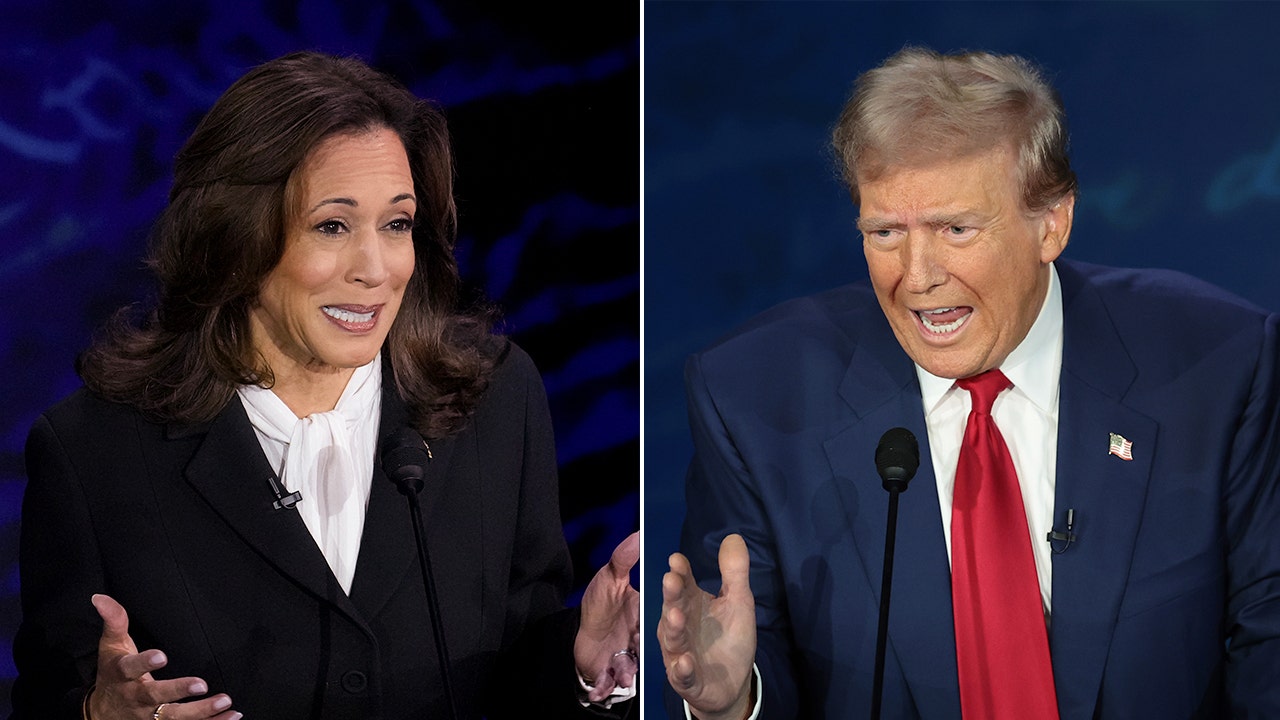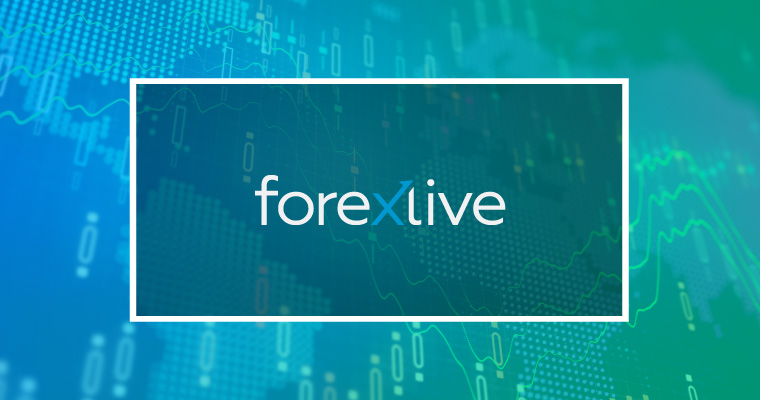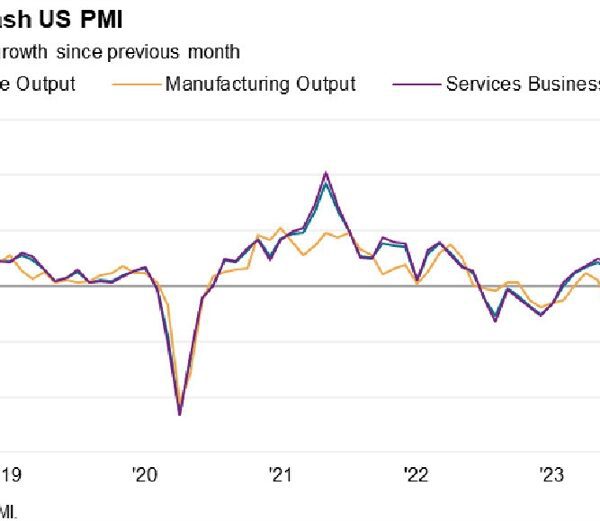- Mon: Market Holiday: Japan (Autumnal Equinox); EZ, UK & US Flash PMIs (Sep), US National Activity Index (Aug)
- Tue: RBA Policy Announcement; German Ifo (Sep), US Consumer Confidence (Sep), Richmond Fed (Sep)
- Wed: Riksbank & CNB Policy Announcements; Australian CPI (Aug), US Building Permits Revision (Aug), New Home Sales (Aug), UK CBI Trends (Sep)
- Thu: SNB & Banxico Policy Announcements, BoJ Minutes (Jul), CBRT Minutes (Sep); German GfK (Aug), Norwegian Labour Force Survey (Aug), Swedish Trade Balance (Aug), EZ M3 (Aug), US Durable Goods (Aug), GDP Final (Q2), PCE Prices Final (Q2), Initial Jobless Claims (w/e 21st Sep)
- Fri: Japan’s ruling LDP party leadership election; Japanese Tokyo CPI (Sep), Chinese Industrial Profits (Aug), German Unemployment (Sep), Norwegian Unemployment (Sep), EZ Consumer Confidence Final (Sep), US PCE (Aug), Uni. of Michigan Final (Sep), German Import Prices (Aug)
EZ Flash PMI (Mon):
Expectations are for September’s manufacturing PMI to slip to 45.5 from 45.8, and services to decline to 52.3 from 52.9, leaving the composite at 50.5 vs. prev. 51.0. As a reminder, the prior report saw the manufacturing print hold steady at 45.8, and services rise to 52.9 from 51.9, leaving the composite at 51.0 vs. prev. 50.2. The accompanying report noted “the positive vibes from the [French Olympic] Games and the ongoing Paralympics might carry through into September in part, but we expect the slowdown in growth, which started in May, to likely resume in the coming months”. This time around, analysts at Investec anticipate an unwinding of the “Olympic effect” seen in the August data, which would see the Composite metrics continue its gradual moderation seen since May. The desk adds that the slowdown in activity has been “underlined by a slowing in new orders and evidence of a loosening in labour market conditions”. Investec holds a Q3 Q/Q EZ growth forecast of 0.2%, albeit with increasing downside risks. From a policy perspective, despite the cautious tone of President Lagarde in the September press conference and subsequent commentary from ECB officials that has downplayed the odds of a rate cut next month, markets assign a circa 68% chance of a 25bps reduction. This appears to be more a by-product of events surrounding the FOMC rather than any EZ-specific developments. However, a soft outturn for the PMI report could see ECB comms begin to align more with market pricing dynamics.
UK Flash PMI (Mon):
Expectations are for September’s services PMI to decline to 53.5 from 53.7, manufacturing to hold steady at 52.5, leaving the composite at 53.5 vs. prev. 53.8. As a reminder, the prior report saw the services print rise to 53.7 from 52.5, and manufacturing rise to 52.5 from 52.1, leaving the composite comfortably in expansionary territory at 53.8 vs. prev. 52.8. The accompanying report noted “Although GDP growth looks set to weaken in the third quarter compared to the impressive gains seen in the first half of the year, the PMI is indicative of the economy expanding at a reasonably solid quarterly rate of around 0.3%.” For the upcoming release, economists at Oxford Economics note that the August manufacturing report highlighted “strong increases in new orders and hiring, while business expectations for future production remained upbeat”. As such, the consultancy expects production levels to edge up and the manufacturing print rise. For the services sector, Oxford Economics looks for a pullback on account of the prior services report noting a “softening in new orders and business sentiment”. From a policy perspective, the release is unlikely to have much-sustained sway on market pricing for the November meeting with the MPC more focused on services inflation and real wage dynamics.
RBA Announcement (Tue):
The RBA is likely to keep the Cash Rate Target unchanged at 4.35% at its meeting next week with all 45 economists surveyed by Reuters unanimously forecasting no change in rates, while money markets are pricing in around a 92% probability for no adjustment in rates and just under an 8% chance of a 25bps cut. As a reminder, the central bank refrained from any policy adjustments at the last meeting in August and stuck to a hawkish tone in which it noted that the Board remains resolute in its determination to return inflation to the target and is not ruling anything in or out, while it reiterated that inflation remains above target and is proving persistent. Furthermore, the central bank said policy will need to be sufficiently restrictive until the board is confident that inflation is moving sustainably towards the target range, and it raised its view for GDP, CPI and the Unemployment Rate with its forecasts assuming the cash rate will be 4.3% in December 2024, 3.6% in December 2025, and 3.3% in December 2026. RBA Governor Bullock also provided a hawkish tone at the post-meeting press conference where she stated that the board considered a rate increase and that a cut is not on the near-term agenda, as well as commented that they are ready to raise rates if needed and that the pricing of cuts for the next six months does not align with the board. The minutes from the meeting also noted that it is possible the Cash Rate would have to stay steady for an extended period and members agreed it is unlikely rates would be cut in the short term. The rhetoric from officials since then continued to support the case for a pause as Governor Bullock repeated that it is premature to be thinking about rate cuts and the board does not expect to be in a position to cut rates in the near term with bringing inflation down remaining the central bank’s highest priority, while she stated that they need to see results on inflation before lowering rates and that the board is not going to focus on one inflation number. This suggests the central bank is far from cutting rates, especially given that the latest monthly inflation data for July topped estimates and remained above the central bank’s 2%-3% target with Weighted CPI YY at 3.5% vs. Exp. 3.4% (Prev. 3.8%).
Riksbank Announcement (Wed):
The Riksbank is expected to deliver a 25bps cut to 3.25%, with markets fully pricing in the chance of such a move and assigning a 16% probability of a deeper 50bps cut. At the last meeting, the Riksbank cut rates by 25bps (as expected) and shifted dovishly, guiding towards “two or three times this year” (prev. guided “two or three times in H2”); essentially opening the door to a cut at each meeting. The Minutes of that meeting mentioned that a 50bps cut was discussed, but the board felt a 25bps cut was well-balanced. The focus of this meeting will also be on the guidance for the remainder of the year, which SEB believes will be revised to indicate another two rate cuts to 2.75% by the end of the year vs Riksbank’s current forecast of 3.14%; it can be noted that Governor Thedeen said that “3 additional cuts are more likely than 2 this year”. Further out, the bank thinks the rate path will also indicate two more cuts until May 2025. In terms of recent data, the Core CPIF in August fell in line with the Bank’s forecast, but headline CPIF fell far below target, which could stimulate the Riksbank to cut by 50bps. SEB believes the chance of such a move is “significantly” higher than market pricing, but would be at odds with the guidance given in the August meeting; as such, SEB thinks it is more probable that the Riksbank will cut by 50bps in November. The SEK has been in focus at past meetings but has stabilised since the last announcement so is unlikely to take much of the attention at this confab.
Australian CPI (Wed):
The monthly CPI indicator for August is expected to cool to 2.7% from 3.3% in July and 3.8% in June. This comes after the RBA policy announcement which is expected to keep its Cash Rate unchanged at 4.35% after the Board telegraphed that it does not expect to begin policy easing until next year. Nonetheless, the monthly CPI will be eyed given the RBA’s warnings and caution on inflation. In terms of the release itself, analysts at Westpac suggest “The cost-of-living relief measures are expected to have a significant impact in August. The Commonwealth energy bill relief rebates flowed to Qld and WA in July, with other jurisdictions to follow in August” as the desk expects an August print of 2.7% – in line with market forecasts.
SNB Announcement (Thu):
Expected to continue its easing cycle via another 25bps cut which will take the Policy Rate to 1.25%. Market pricing assigns a circa 63% chance of such an outcome with a larger cut of 50bps priced at 37%. Further easing is justified by the ongoing moderation of inflation with August’s Y/Y CPI printing at 1.1%, shy of the 1.2% forecast by markets and well below the SNB’s overall Q3 forecast of 1.5%. The continued faster-than-expected moderation of inflation may well provide the SNB with more confidence on the pricing front and will likely see downward tweaks to their inflation forecasts, though the magnitude of the adjustment remains unclear. Additionally, such confidence could enable the SNB to allow the CHF to weaken a touch, as called for by the Swissmem group who in early August outlined their fair value EUR/CHF view of 0.98 vs circa. 0.92 at the time and 0.9450 at the time of writing. Furthermore, the impact of currency strength on domestic industry was acknowledged by Chairman Jordan in a speech towards the end of August. As a reminder, this is the last policy meeting for Chairman Jordan who is to be replaced by current Vice-Chairman Schlegel.
Banxico Announcement (Thu):
Mexico’s central bank cut rates by 25bps to 10.75% at the last meeting, where analyst expectations were split between a cut and a hold. The decision was not unanimous however with three out of the five Banxico members (namely Governor Victoria Rodríguez, Galia Borja, and Omar Mejía) supporting the decision, while the remaining two (Irene Espinosa and Jonathan Heath) wanted to hold rates at 11%. The meeting saw 2024 year-end headline inflation forecasts rise from 4.0% to 4.4%, while its core projection was left unchanged at 3.9%. The language within the statement was largely reiterated, with the central bank maintaining its view that “looking ahead, the Board foresees that the inflationary environment may allow for discussing reference rate adjustments.” Since then, recent data has seen the August inflation data cool further with core easing to 4.0%, the top end of Banxico’s target range. Meanwhile, activity gauges have been soft, leading some to question the economic momentum in Q3. Externally, the Fed delivered a bumper 50bps rate cut this week, which analysts said gives Banxico more scope to continue easing. Accordingly, many would be unsurprised by another 25bps rate cut in September. The latest Banxico private sector analyst poll saw expectations shift with the year-end rate seen at 10.25%, lower than the 10.50% in the prior poll, while the end-2025 rate is seen at 8.25% vs the prior forecast of 8.50%. However, with the recent approval of Mexico’s judicial reform, Oxford Economics writes it poses a downside risk to investment and could pause policy rate easing. Nonetheless, the desk sees rates ending at 10.25%, 50bps down from current levels.
Japanese LDP Party Leadership Race (Fri):
Japan’s ruling LDP will hold an election on September 27th for the party’s next president who will take over from the current party chief and Japanese PM Kishida after he announced to step down and not run for re-election in the aftermath of several party scandals which resulted in record-low approval ratings. The voting process in the LDP leadership race consists of a maximum of two rounds in which candidates would need a majority of votes from the 367 LDP lawmakers and an equal 367 votes from rank-and-file party members to win outright in the first round. However, given the record number of candidates, as a total of 9 hopefuls have secured the required nomination from 20 LDP lawmakers, it is likely that the election will lead to an immediate run-off between the two candidates that received the most votes whereby the winner will be determined by votes from the 367 LDP lawmakers and just 47 votes from the prefectural chapters of the LDP. The front-runners include former Defence Minister Shigeru Ishiba who is viewed by 26% of respondents in a recent Asahi Shimbun survey as the most suitable candidate to succeed PM Kishida, while another high-profile candidate is former Environment Minister Shinjiro Koizumi who was preferred by 21% and is the son of a former PM. Furthermore, current Minister of State for Economic Security and Abe protege Sanae Takaichi was seen in 3rd place with 11% but is the most popular candidate among stock market professionals hoping for Abenomics-type policies, and is one of the two candidates in the pool vying to be Japan’s first female Prime Minister. However, it was worth noting that Takaichi was a candidate at the last LDP presidential election in 2021 and was eliminated in the first round as the run-off was held between (outgoing PM) Kishida and current Minister for Digital Transformation Taro Kono which the latter lost through around a 60%-40% vote split but is running again next week for party leadership. Other candidates include Japan’s current Chief Cabinet Secretary Yoshimasa Hayashi, former Minister of Health, Labour & Welfare Katsunobu Kato, former Minister of State for Economic Security Takayuki Kobayashi, former Minister for Foreign Affairs and current LDP Secretary-General Toshimitsu Motegi, while current Minister of Foreign Affairs Yoko Kamikawa is the second of the female candidates seeking to become Japan’s next leader. As it is a crowded field, no candidate will likely achieve the outright majority needed to win in the first round and therefore the composition of the run-off and overall result will likely be influenced by the different factions within the LDP party and the deal-making between potential kingmakers including current PM Kishida who was the previous head of the now-dissolved Kochikai faction which has two former members in the race (Hayashi and Kamikawa). Other key background players include LDP veteran Taro Aso, who has served in many positions including Finance Minister, Deputy PM and PM, while he is currently the Vice President of the LDP and the leader of the Shikokai faction which has endorsed Kono. Furthermore, former Japanese PM Suga is seen as a key figure among the non-mainstream members within the party and is reportedly backing Koizumi, while current LDP Secretary-General and leadership candidate Motegi is the head of the Heisai Kenyukai faction but is ranking very low on opinion surveys. Nonetheless, the result of the election is not likely to cause any major fireworks as most candidates have endorsed the raising of interest rates gradually including front-runners Ishiba and Koizumi, although there could be a dovish reaction if Abe protege Takaichi wins given that she has previously opposed policy normalisation and thought that the BoJ hiked rates too soon.
Japanese Tokyo CPI (Fri):
There are currently no expectations for the Tokyo CPI metrics, although, barring a surprising release, it is difficult to predict how much impact this release will have on Japanese assets following the latest BoJ policy announcement – and particularly after Governor Ueda’s press conference. To recap, Ueda’s most notable comments were that upside price risks have decreased given recent FX moves, and risks of an inflation overshoot have somewhat diminished, whilst markets remain unstable. In terms of last month’s release, Core Tokyo CPI printed above forecasts and accelerated for a fourth straight month, rising 2.4% Y/Y (exp. 2.2%; prev.2.2% in July). The nationwide metrics released on Friday saw accelerations across all points, albeit mostly matching expectations.
Chinese Industrial Profits (Fri):
The data will be watched to give a prognosis of the Chinese economy following the most recent batch of underwhelming data. To recap, recent weeks have seen sub-par inflation prints, alongside sluggish imports, retail sales, industrial production, and house prices – all reinforcing the fears of a slowdown in the world’s second-largest economy. Using the Caixin PMI as a proxy, the release noted that “Prominent issues such as insufficient domestic demand, significant uncertainties in external demand, and weak market optimism persist. There is still room for fiscal and monetary policy adjustments. There is an increasingly urgent need for China to enhance policy support and ensure the effective implementation of earlier policies.”
US PCE (Fri):
Writing after the release of PPI and CPI data for August, WSJ Fed watcher Nick Timiraos said economists who map the CPI and PPI into the PCE think core PCE will be around +0.13-0.17% M/M in August, extending a streak of mild, target-consistent monthly readings, and cooler than the August core CPI figure. The FOMC’s September policy statement said inflation has made further progress towards its 2% objective, though remains ‘somewhat elevated’, but it has gained greater confidence in inflation moving sustainably toward target, and judges risks to employment and inflation goals are roughly in balance. Crucially, it said that while labour force participation is at high levels, and wage increases are still a bit above being consistent with 2% inflation, it does not need to see further loosening in the labour market in order for inflation to return to 2%. Still, the Fed is not declaring victory on inflation; it is close to target, but not yet there. In its updated economic projections, members lowered their forecasts for headline PCE both this year and next year (to 2.3% Y/Y in 2024 vs its previous view of 2.6%; and to 2.1% Y/Y in 2025 vs 2.3%), and also lowered its core PCE view (sees 2.6% Y/Y in 2024 vs 2.8; and sees it at 2.2% Y/Y in 2025 vs 2.3%).
This article originally appeared on Newsquawk.














